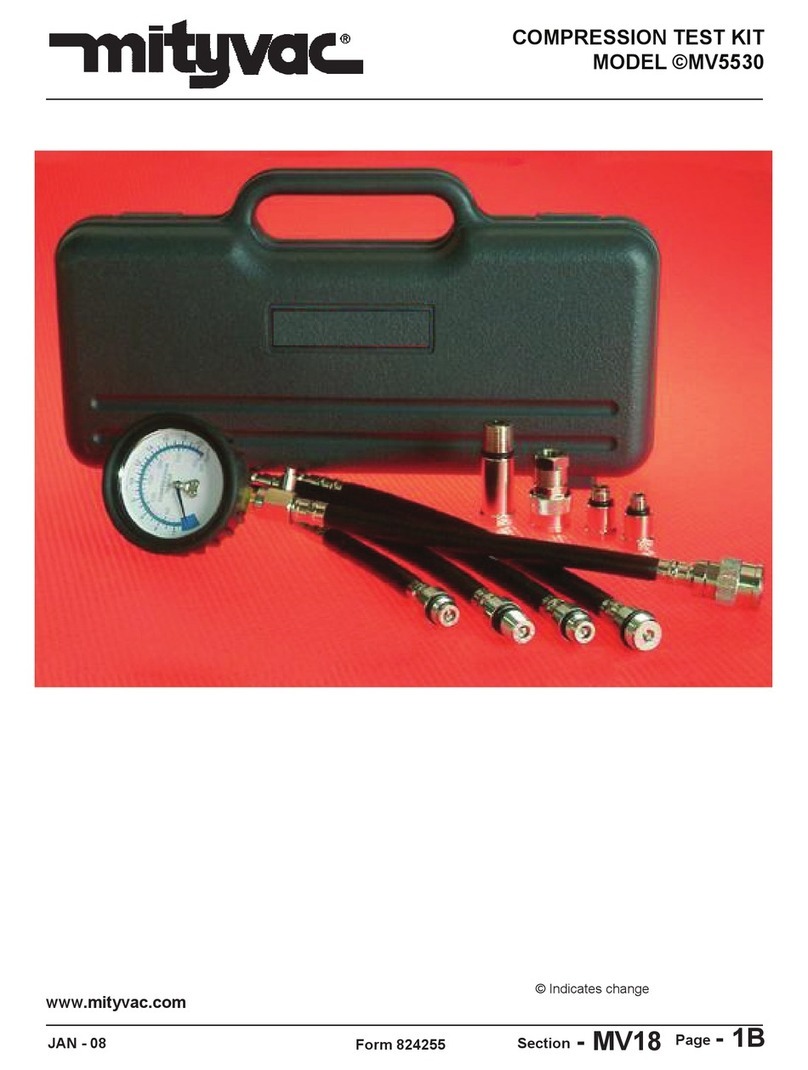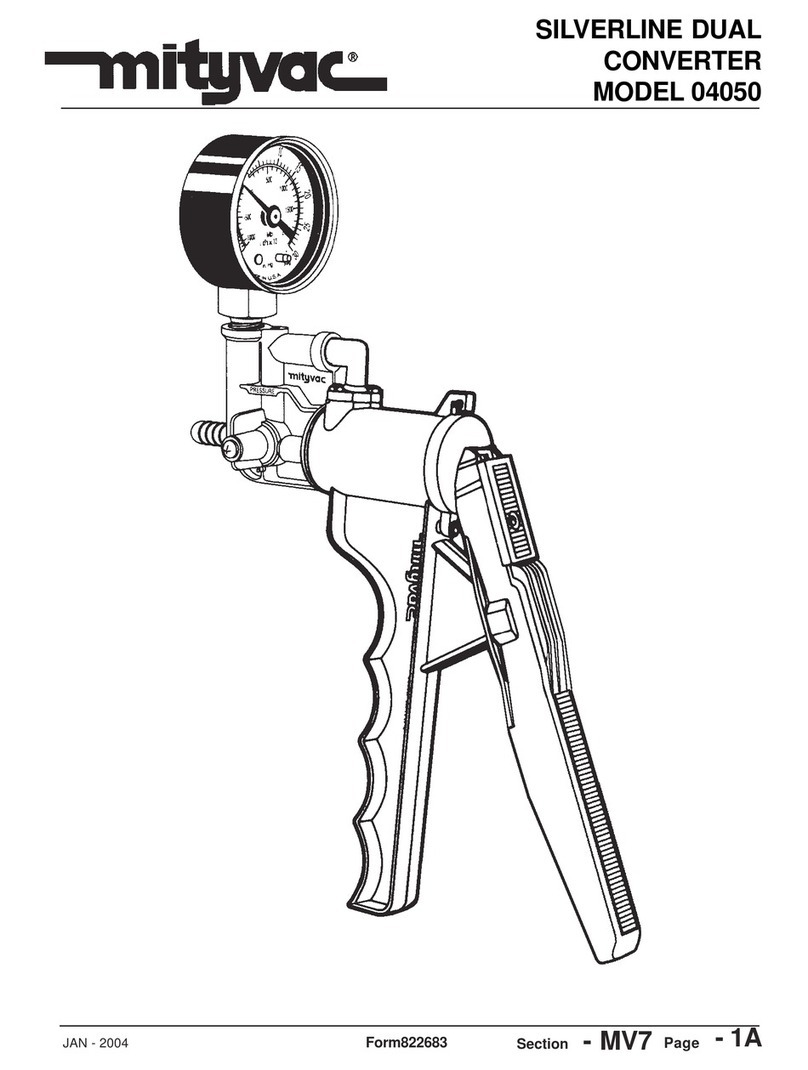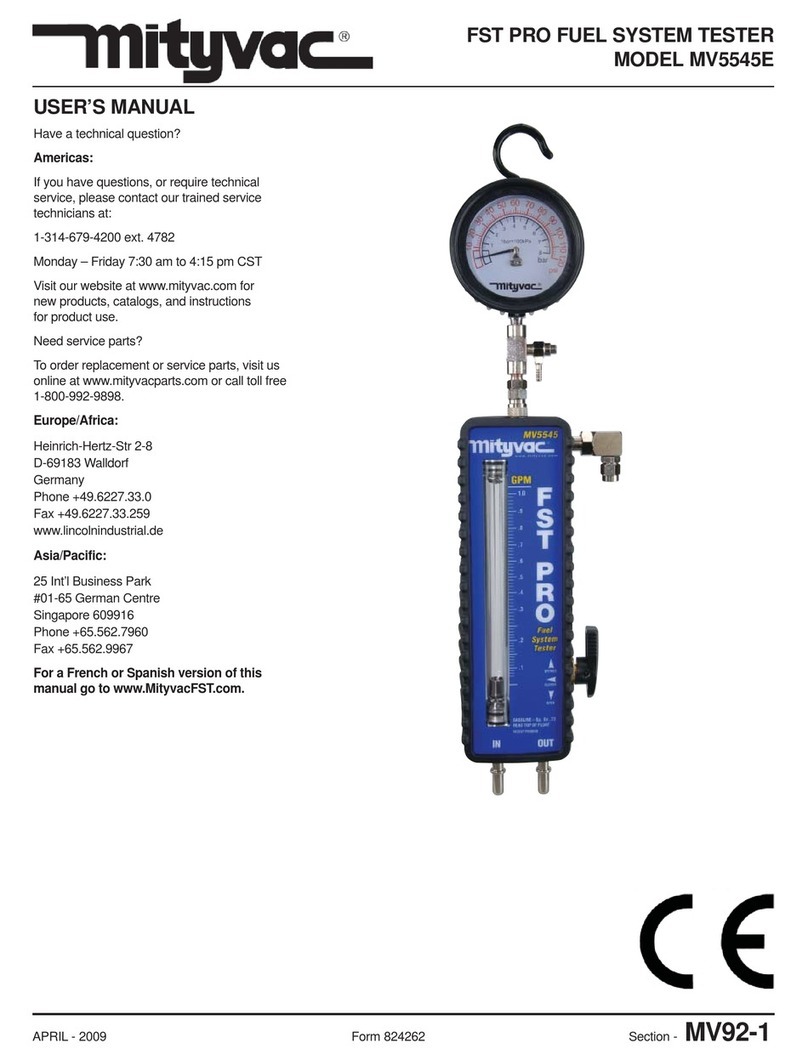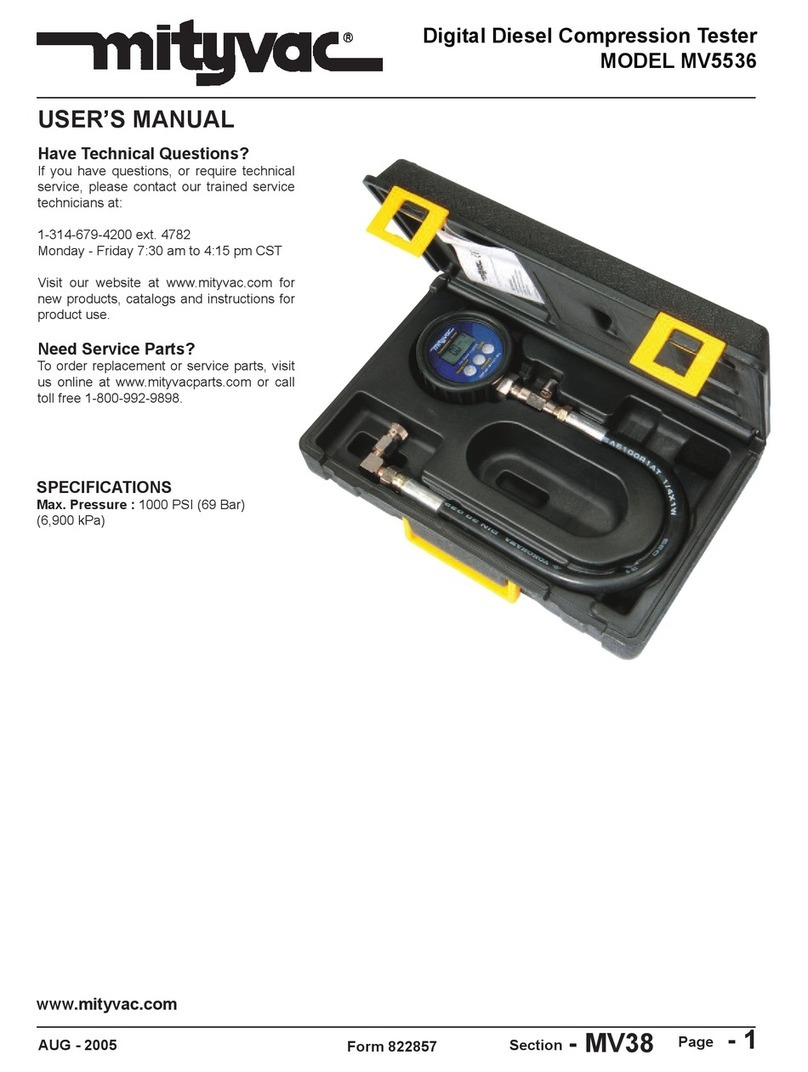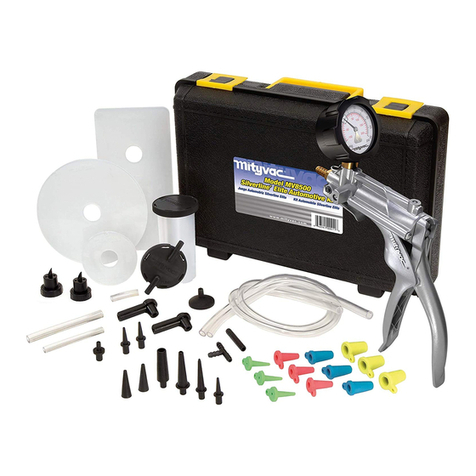
Introduction
The Mityva FST Pro Fuel System Tester is an advan ed
diagnosti tool designed for troubleshooting and pinpointing
ommon automotive fuel delivery system malfun tions,
in luding:
• Failing fuel pump
• Faulty pressure regulator
• Blo ked inline filter
• Blo ked inlet strainer/so k
• Pin hed or rushed fuel line
• Fuel ontamination
• Fuel tank vortex
• Fuel system leaks
This manual fo uses on the appli ation of the FST to modern
ele troni fuel inje tion (EFI) systems. However, it is equally
apable of diagnosing earlier fuel inje tion systems su h as
throttle body inje tion (TBI), ontinuous inje tion (CIS) and even
pre-fuel inje tion arbureted systems. A separate low pressure
gauge is available from Mityva for systems that operate below
15 PSI (100 kPa).
Saf ty Pr cautions
The use of this servi e tool requires the exposure of highly
flammable gasoline. To prevent fires, explosions and/or severe
injury, always apply extra pre autions when diagnosing or
working on fuel systems.
The FST Pro is designed for servi ing a variety of vehi les in a
safe, onvenient manner. However, fuel delivery systems vary
widely between makes and models of vehi les, potentially
requiring additional steps or equipment to perform a proper
servi e job. The pro edures outlined in this manual are to serve
as guidelines for the use of this equipment. In addition to these
guidelines, always follow the manufa turer’s re ommended
pro edures when servi ing ea h unique vehi le. Use ommon
sense in the appli ation of this tester; and do not attempt to
for e a test on a fuel system for whi h this equipment is not
designed to perform.
This tester is designed for use on gasoline/petrol engines only.
It is safe for use with gasoline and most gasoline additives, but
is not ompatible with diesel fuel or alternative/flex fuels that
ontain ethanol.
• Always read arefully and understand instru tions prior to
using this equipment
• Wear safety glasses at all times
• Operate the vehi le only in a well ventilated area, and away
from potential sour es of flame or ignition.
• Prior to starting an engine, make sure all omponents of the
tester, body parts, and personal lothing are lear of rotating
engine omponents
• Avoid burns by remaining autious of engine parts that may
be ome hot when the engine is running
• Never leave a vehi le unattended while testing
• Che k and se ure all fuel system onne tions before
starting the vehi le or a tivating the fuel pump
• Wear gloves and prote tive lothing to avoid the onta t of
gasoline on skin. If onta t o urs, immediately wash the
area and perform ne essary first aid
• Always keep a fire extinguisher on hand when performing
fuel related diagnosti s. Make sure the extinguisher is rated
for fuel, ele tri al and hemi al fires
• Avoid spilling fuel on hot engine parts. Clean-up any fuel
spills immediately after they o ur.
Spec f cat ons
Maximum Flow Capa ity: 1.0 gallon/minute (3.8 liters/minute)
Maximum Rated Pressure: 200 PSI (1340 kPa) (13.8 bar)
Compon nts, S rvic Parts
and Acc ssori s
The Mityva FST Pro ombines the highest quality materials
and workmanship to reate a durable, finely tuned diagnosti
tool, whi h with proper are will provide years of valuable
servi e. All omponents are designed and quality ontrolled
in the U.S.
Following is a list of standard omponents, servi e parts and
a essories relating to model MV5545. Components and
a essories are available from your lo al Mityva distributor.
Servi e parts, warranty information and te hni al servi e
information are available at the onta t information shown on
the front of this user manual.
Standard K t Components
Model MV5545 in ludes the following high quality omponents:
• 3.5" (90 mm) diameter diaphragm style Pressure Gauge
- 0 to 120 PSI (0 to 8 bar) (0 to 800 kPa) s ale of measure
- Push-button pressure relief valve
- 360° swivel hook
- Prote tive rubber boot
• Flowmeter Assembly
- Borosili ate glass variable area flowtube with prote tive
shield and pre ision aluminum float
- 3-way Flow Control Valve
- Fuel bypass port
- Male push-to- onne t, qui k- hange oupler
w/ S hrader valve
- (2x) Male SAE J2044 qui k- onne ts
- Repla eable fa eplates with 0 to 1.0 gallon/minute
s ale of measurement
- Prote tive rubber boot
• (2x) Repla eable flowmeter fa eplates with 0 to 4 liters/
minute s ale of measurement
• 1/8" (3 mm) ID x 6' (1.8 m) long Pressure Relief Hose
• 1/4" (6.5 mm) ID x 6' (1.8 m) long Bypass Hose
• (2x) Flowmeter Conne tion Hose
• (2x) S issor Hose Clamp
• (2x) Hose Plug
• (6x) Qui k- onne t Repla ement Clip
• Custom Storage Case
• Automotive Fuel System Test Adapters
(see Fuel System Test Adapters on page 6)
Page Numbe - 3

